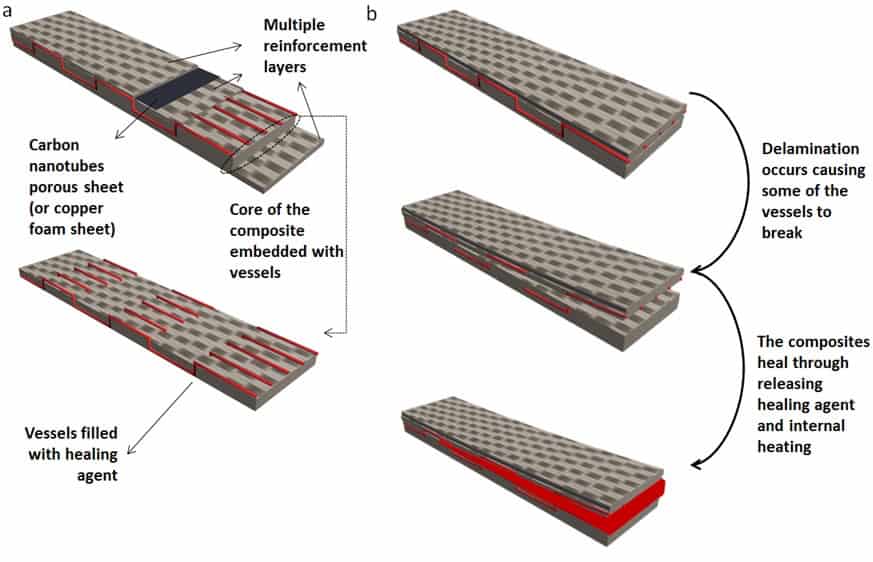Fibre-reinforced composites self-heal at sub-zero temperatures
Scientists have developed a method that allows cracks in composites to self-heal at temperatures as low as -60 degrees C.

The team, led by the University of Birmingham and Harbin Institute of Technology in China, said the method could be applied to fibre-reinforced materials used in situations where repair or replacement is challenging such as offshore wind turbines, or even in aircraft during flight. A paper describing the work has been published in Royal Society Open Science.

Under the right conditions self-healing composites have been shown to exhibit favourable properties. Previous research has yielded efficiencies above 100 per cent, indicating that the function of the healed material can be better than that prior to damage.
Until this paper, however, healing was deemed insufficient in conditions including very low temperature.
Key to self-healing at low temperatures is the way in which the new structural composite maintains its core temperature. To do this, three-dimensional hollow vessels (that deliver and release healing agents), and a porous conductive element (to provide internal heating and to defrost when necessary) are embedded in the composite.
Register now to continue reading
Thanks for visiting The Engineer. You’ve now reached your monthly limit of news stories. Register for free to unlock unlimited access to all of our news coverage, as well as premium content including opinion, in-depth features and special reports.
Benefits of registering
-
In-depth insights and coverage of key emerging trends
-
Unrestricted access to special reports throughout the year
-
Daily technology news delivered straight to your inbox










UK Enters ‘Golden Age of Nuclear’
Apologies if this is a duplicate post - a glitch appears to have removed the first one: > While I welcome the announcement of this project, I note...